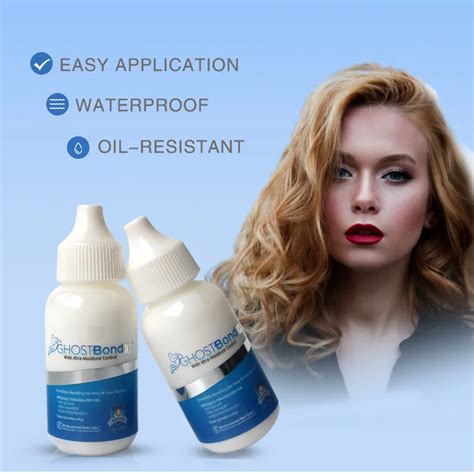Best Adhesive for Wigs: A Quest for Scalp-Sure Invisibility
Wigs have become an indispensable part of modern fashion, empowering countless individuals to express their style, enhance their appearance, and boost their confidence. However, the key to a flawless wig-wearing experience lies in the adhesive you choose. A high-quality adhesive can ensure a secure and invisible bond between your scalp and the wig, granting you peace of mind and the freedom to live life without any slippage or embarrassing moments.

In this comprehensive guide, we delve into the intricacies of wig adhesives, exploring their different types, features, and suitability for various hair textures and skin types. We also provide expert recommendations and practical tips to help you make an informed decision and find the perfect adhesive for your needs.
Understanding the Types of Wig Adhesives
Wig adhesives come in a variety of formulations, each offering unique benefits and considerations:
- Liquid Adhesives: renowned for their strong hold and long-lasting power, liquid adhesives are applied directly to the scalp and the wig cap. They typically create a water-resistant barrier that prevents slippage and ensures a secure fit.
- Tape Adhesives: offering versatility and a less permanent hold, tape adhesives come in pre-cut strips or rolls. They are applied to the wig cap and adhere to the scalp, providing a comfortable and customizable bond.
- Gel Adhesives: formulated with a gel-like consistency, gel adhesives provide a flexible and moldable hold. They are ideal for conforming to uneven scalp contours and can be applied in layers for added strength.
- Cream Adhesives: known for their creamy texture and ease of application, cream adhesives offer a gentle hold and are suitable for sensitive skin types. They are water-based and can be easily removed with soap and water.
Choosing the Right Adhesive for Your Needs
The ideal wig adhesive for you depends on several factors, including your hair texture, skin sensitivity, and desired hold strength:
- Hair Texture: For fine or slippery hair, opt for stronger adhesives like liquid or tape adhesives. Thick or curly hair may require a more malleable adhesive like gel or cream adhesives.
- Skin Sensitivity: If you have sensitive skin, choose hypoallergenic and water-based adhesives like cream adhesives. Avoid adhesives containing harsh chemicals or solvents.
- Hold Strength: Consider the duration of time you need your wig to stay in place. Liquid and tape adhesives offer a long-lasting hold, while gel and cream adhesives are more suited for shorter-term use.
Expert Recommendations: Top 3 Wig Adhesives
Based on thorough research and consumer feedback, we present the top 3 adhesives that consistently deliver exceptional performance:
- GHOSTBOND XL: A liquid adhesive known for its waterproof and sweat-proof properties, GHOSTBOND XL provides a strong and invisible bond for up to 2-3 weeks. It is suitable for all hair textures and can be removed with adhesive remover.
- WALKER TAPE ULTRA HOLD: A double-sided tape adhesive designed for maximum hold, WALKER TAPE ULTRA HOLD offers a discreet and comfortable bond that lasts up to 4 weeks. It is ideal for fine or slippery hair and can be easily applied and removed.
- GOT2B GLUED: A gel adhesive formulated with a flexible hold, GOT2B GLUED is perfect for everyday wig wearers. It provides a secure bond for up to 4 days and is water-resistant, making it suitable for active lifestyles.
Tips and Tricks for Flawless Wig Bonding
- Cleanse and Prep Your Scalp: Before applying the adhesive, thoroughly cleanse your scalp with a gentle shampoo and water. Remove any dirt, oil, or product residue to ensure optimal adhesion.
- Apply the Adhesive Sparingly: Use a small amount of adhesive and apply it in thin, even layers. Avoid over-applying, as this can weaken the bond and cause discomfort.
- Press Firmly and Smoothly: After applying the adhesive, press the wig firmly onto your scalp and smooth it down to distribute the adhesive evenly. Use a wig brush or comb to ensure a secure fit.
- Allow Sufficient Drying Time: Depending on the adhesive you use, allow adequate time for it to dry and bond properly. This typically takes around 5-10 minutes for liquid adhesives and 2-3 minutes for tape adhesives.
- Remove the Wig Gently: When removing your wig, start by loosening the edges and gradually peel it away from your scalp. Use an adhesive remover to dissolve any remaining adhesive and avoid damaging your hair or skin.
Innovative Applications of Wig Adhesives
Beyond traditional wig-wearing, wig adhesives have found myriad innovative applications:
- Toupee Attachment: Discreetly secure toupees to thinning or balding areas of the scalp, providing a natural and undetectable appearance.
- Lace Frontal Bonding: Securely attach lace frontals to the hairline, creating the illusion of a natural hair growth pattern.
- Hair Extensions: Temporarily or permanently bond hair extensions to your natural hair, adding length, volume, or color without damaging your tresses.
- Special Effects Makeup: Use wig adhesives to attach prosthetics, create scars, or simulate other skin textures for film, television, and stage productions.
Conclusion
Choosing the right adhesive for your wig is paramount to achieving a seamless and confident wig-wearing experience. By understanding the different types of adhesives, considering your individual needs, and following expert recommendations, you can find the perfect adhesive to keep your wig securely in place, empowering you to embrace your unique style and live life without limitations.
